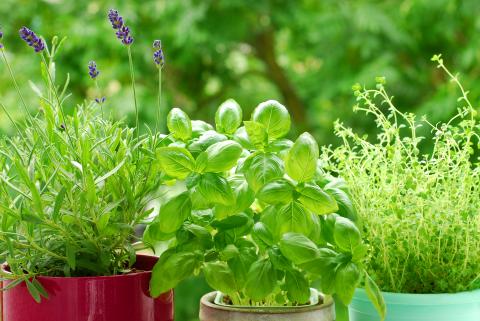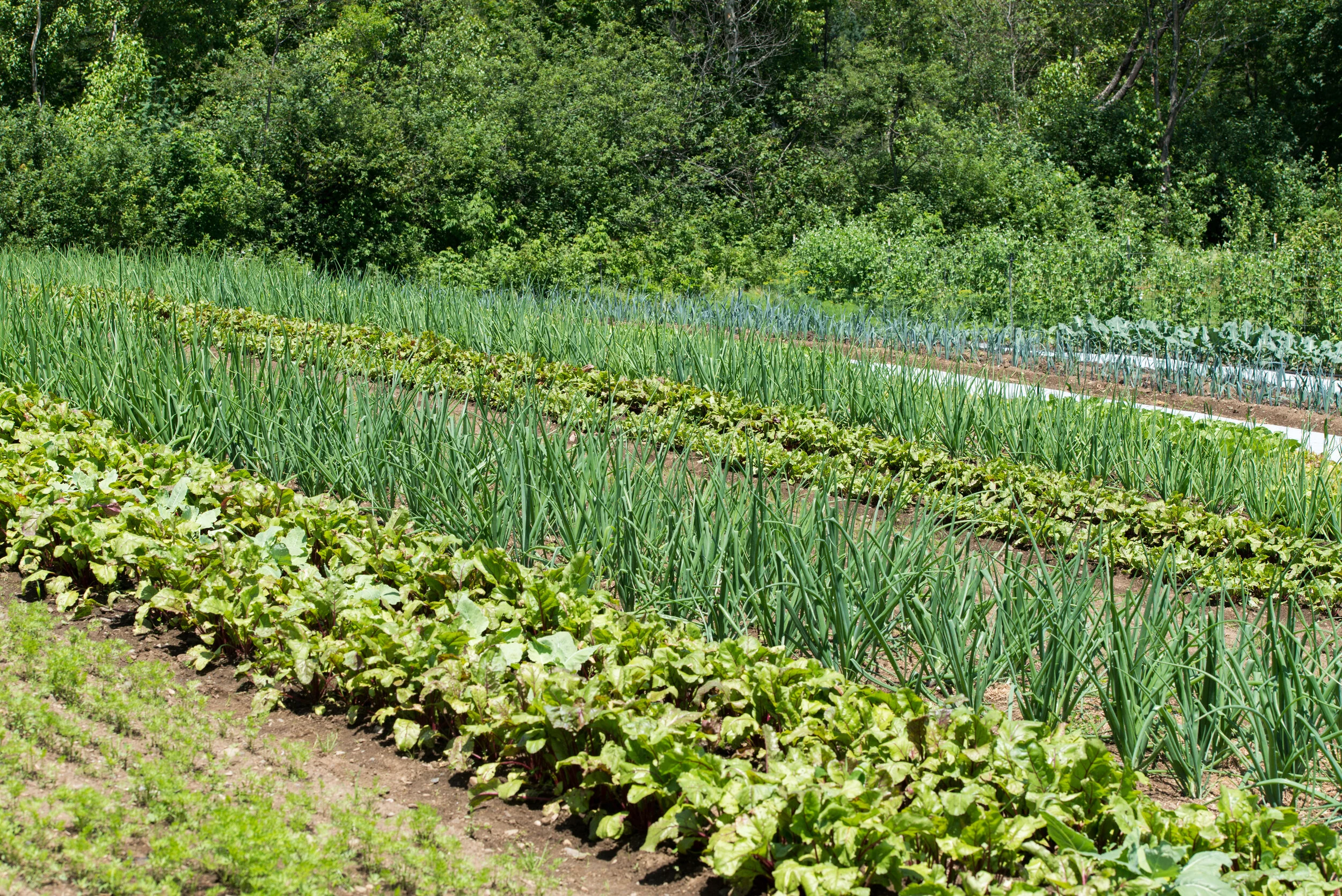Tarragon: The Nurturing Herb That Makes Your Vegetables Taste Better
Tarragon is a leafy herb that is native to Eastern Europe and Asia. It has a delicate licorice flavor that pairs well with a variety of vegetables, meats, and seafood. Tarragon is also a member of the sunflower family, which means that it is a nurturing herb that can help to improve the growth and flavor of other plants.
In this blog post, we will explore the many benefits of tarragon, including its flavor, health benefits, and nurturing properties. We will also provide some recipes that you can use to incorporate tarragon into your cooking.
Tarragon's Flavor
Tarragon has a delicate licorice flavor that is often described as being similar to anise. It is also slightly sweet and tangy. Tarragon's flavor is strongest when it is fresh, but it can also be dried and used in cooking.
Tarragon pairs well with a variety of vegetables, including asparagus, broccoli, carrots, peas, and tomatoes. It is also a popular ingredient in chicken, fish, and egg dishes. Tarragon can also be used in vinaigrettes, sauces, and marinades.
Tarragon's Health Benefits
Tarragon is a good source of vitamins A and C, as well as potassium and fiber. It also contains antioxidants, which can help to protect your cells from damage.
Some of the health benefits of tarragon include:
- Boosting the immune system
- Reducing inflammation
- Improving digestion
- Protecting against cancer
- Reducing stress
- Improving sleep
Tarragon's Nurturing Properties
Tarragon is a member of the sunflower family, which means that it is a nurturing herb. This means that it can help to improve the growth and flavor of other plants.
Tarragon can be used as a companion plant to tomatoes, carrots, and cucumbers. It can also be used as a mulch around other plants. Tarragon's essential oils can help to repel pests and diseases.
How to Use Tarragon
Tarragon is a versatile herb that can be used in a variety of ways. You can use fresh tarragon leaves in salads, sandwiches, and cooked dishes. You can also use dried tarragon leaves, but the flavor will be more muted.
If you are using fresh tarragon leaves, you can chop them up and add them to your dish at the end of cooking. This will help to preserve their flavor. You can also add fresh tarragon leaves to a vinaigrette or marinade.
If you are using dried tarragon leaves, you can add them to your dish at the beginning of cooking. This will help to release their flavor throughout the dish. You can also add dried tarragon leaves to a pot of soup or stew.
Tarragon Recipes
Here are a few recipes that you can use to incorporate tarragon into your cooking:
- Tarragon Chicken: This recipe is simple to make and the results are delicious. Simply season chicken breasts with salt, pepper, and tarragon. Then, grill or bake the chicken until cooked through. Serve with your favorite sides.
- Tarragon Shrimp Scampi: This dish is quick and easy to make and it is perfect for a weeknight meal. Simply cook shrimp in olive oil with garlic and white wine. Then, add tarragon and lemon juice. Serve over pasta or rice.
- Tarragon Asparagus Salad: This salad is light and refreshing. Simply cook asparagus until tender-crisp. Then, toss with olive oil, lemon juice, tarragon, and salt and pepper to taste. Serve immediately.
- Tarragon Vinaigrette: This vinaigrette is perfect for salads, sandwiches, or grilled meats. Simply whisk together olive oil, lemon juice, tarragon, salt, and pepper to taste. Serve immediately.
Conclusion
Tarragon is a versatile herb that can be used in a variety of ways. It has a delicate licorice flavor that pairs well with a variety of vegetables, meats, and seafood. Tarragon is also a member of the sunflower family, which means that it is a nurturing herb that can help to improve the growth and flavor of other plants.
If you are looking for a new herb to add to your cooking, I encourage you to try tarragon. It is a delicious and versatile herb that can add a touch of flavor to any dish.
Tarragon is a versatile herb that can be used in a variety of dishes, from salads to sauces. But did you know that it can also be used as a companion plant to help attract beneficial insects and repel pests?
Some of the best companion vegetables for tarragon include:
- Tomatoes: Tarragon and tomatoes are a classic combination that is both flavorful and beneficial. Tarragon helps to repel tomato hornworms and other pests, while tomatoes provide tarragon with the nitrogen it needs to thrive.
- Eggplants: Tarragon and eggplants are another great pairing. Tarragon helps to repel eggplant pests such as the Colorado potato beetle, while eggplants provide tarragon with the moisture it needs.
- Peppers: Tarragon and peppers are also good companion plants. Tarragon helps to repel pepper pests such as aphids and whiteflies, while peppers provide tarragon with the warmth and sun it needs.
If you are interested in learning more about tarragon companion vegetables, I recommend visiting Gardenia Inspiration. This website has a comprehensive list of companion plants for tarragon, as well as information on how to plant and care for this herb.
FAQ of tarragon companion vegetables
Q: What vegetables are good companions to tarragon?
A: Tarragon is a good companion to most vegetables, particularly eggplant. It also grows well with chives, lemon balm, lemon thyme, parsley, rosemary, and sage.
Q: What are the benefits of companion planting tarragon with other vegetables?
A: Companion planting is the practice of planting certain plants together in order to benefit each other. Tarragon can be a beneficial companion plant for a number of vegetables, including:
- Eggplant: Tarragon can help to repel pests that damage eggplant, such as aphids and whiteflies.
- Chives: Chives can help to repel root knot nematodes, which can damage the roots of tarragon plants.
- Lemon balm: Lemon balm can help to attract beneficial insects, such as ladybugs and lacewings, which can help to control pests.
- Parsley: Parsley can help to improve the flavor of tarragon.
- Rosemary: Rosemary can help to repel cabbage moths, which can damage cabbage and broccoli plants.
- Sage: Sage can help to repel spider mites, which can damage a variety of vegetables.
Q: How far apart should tarragon and its companion vegetables be planted?
A: The spacing requirements for tarragon and its companion vegetables will vary depending on the specific plants involved. However, as a general rule, you should space tarragon plants about 12-18 inches apart and its companion vegetables about 6-12 inches apart.
Q: What are some tips for companion planting tarragon with other vegetables?
A: Here are a few tips for companion planting tarragon with other vegetables:
- Plant tarragon in full sun or partial shade.
- Plant tarragon in well-drained soil.
- Water tarragon regularly, especially during hot, dry weather.
- Fertilize tarragon every few weeks with a balanced fertilizer.
- Remove any dead or diseased leaves from tarragon plants.
- Harvest tarragon leaves as needed.
Image of tarragon companion vegetables
Here are 5 images of tarragon companion vegetables from Pinterest:
Tarragon is a good companion plant for eggplant because it helps to repel pests and diseases. It also helps to improve the flavor of the eggplant.
Tarragon is a good companion plant for tomatoes because it helps to deter pests such as aphids, spider mites, and whiteflies. It also helps to improve the flavor of the tomatoes.
Tarragon is a good companion plant for asparagus because it helps to improve the flavor of the asparagus. It also helps to repel asparagus beetles.
Tarragon is a good companion plant for beans because it helps to attract beneficial insects such as ladybugs and lacewings. It also helps to improve the flavor of the beans.
Tarragon is a good companion plant for carrots because it helps to repel carrot root fly. It also helps to improve the flavor of the carrots.



Post a Comment for "Tarragon: The Nurturing Herb That Makes Your Vegetables Taste Better"